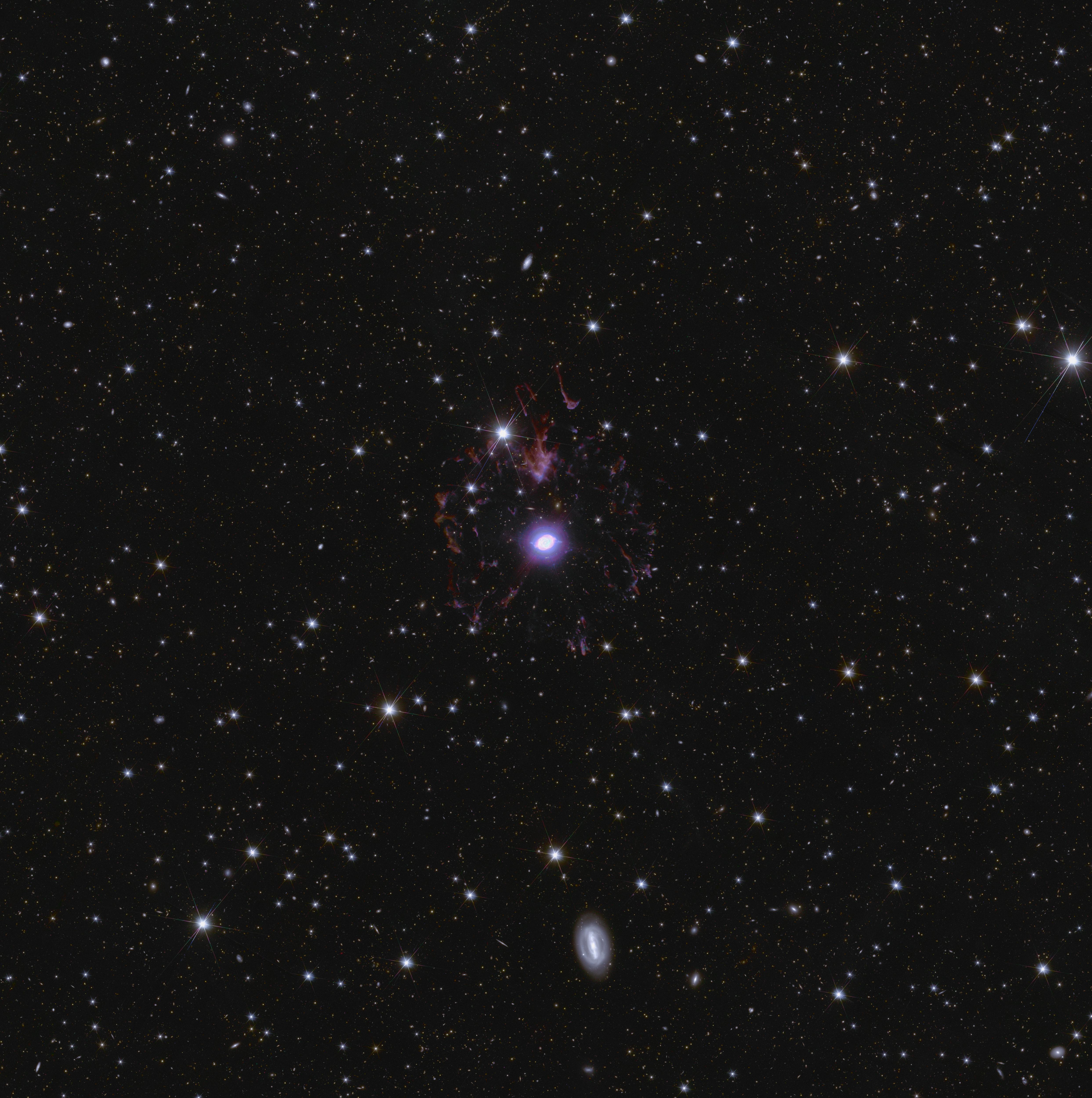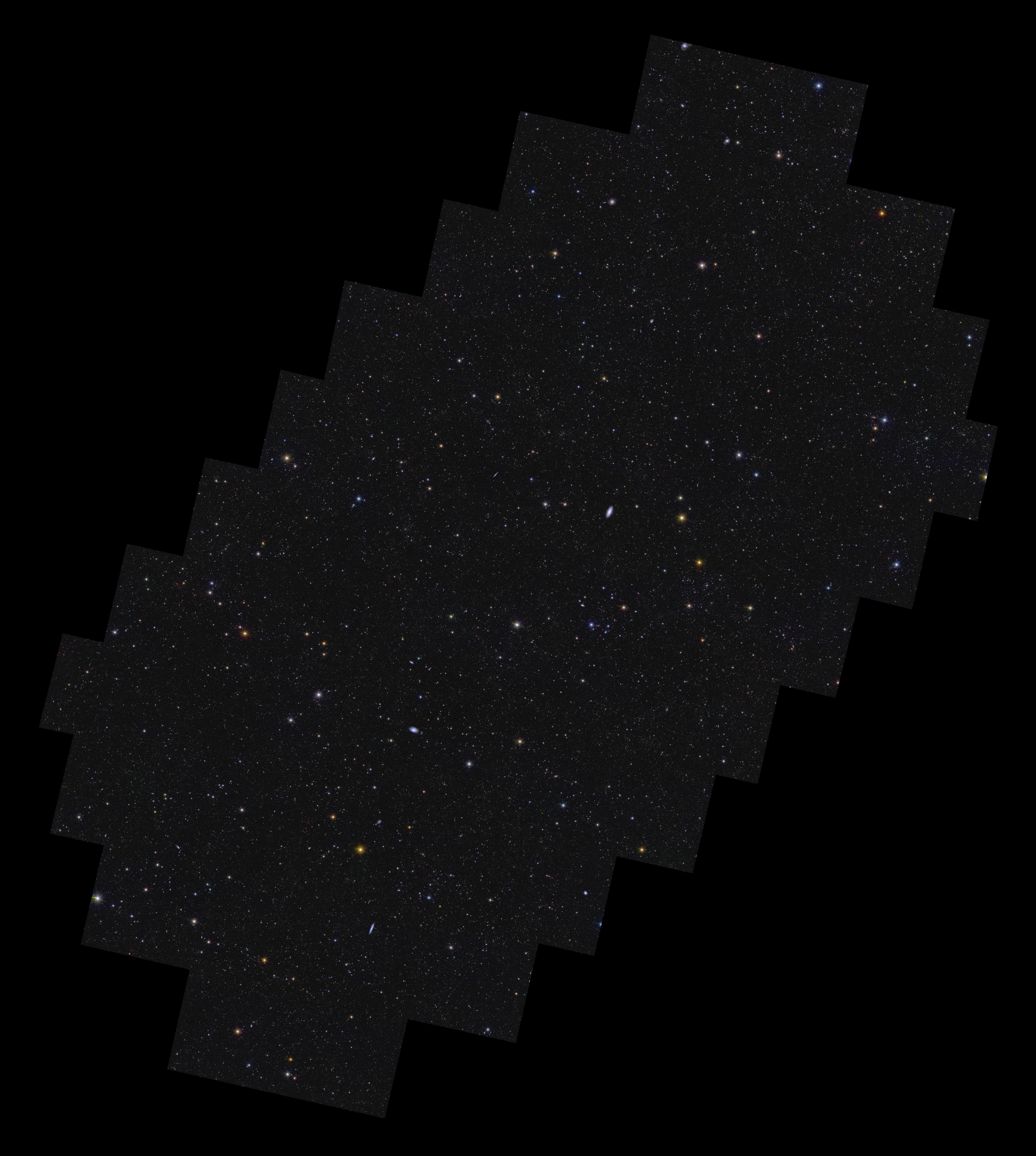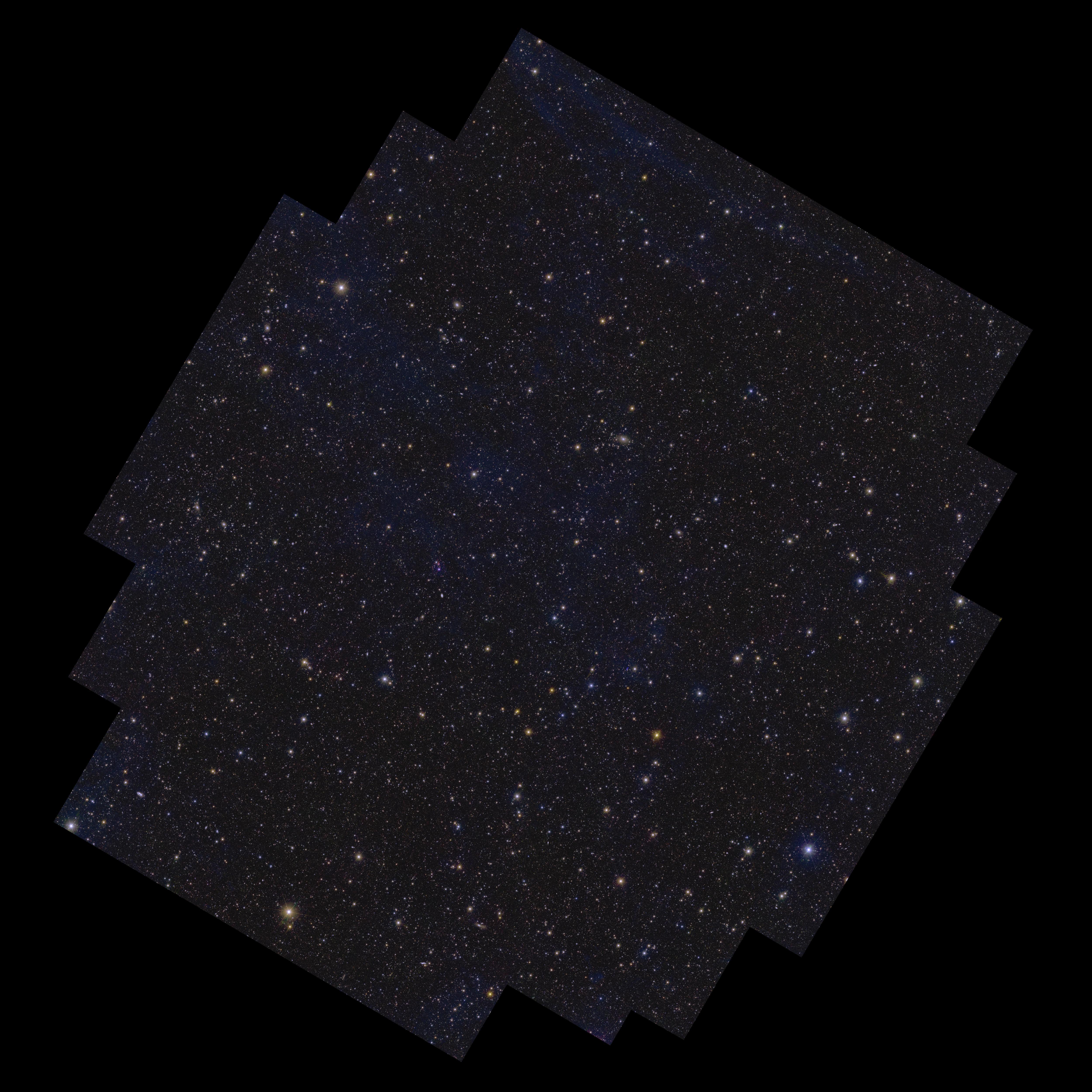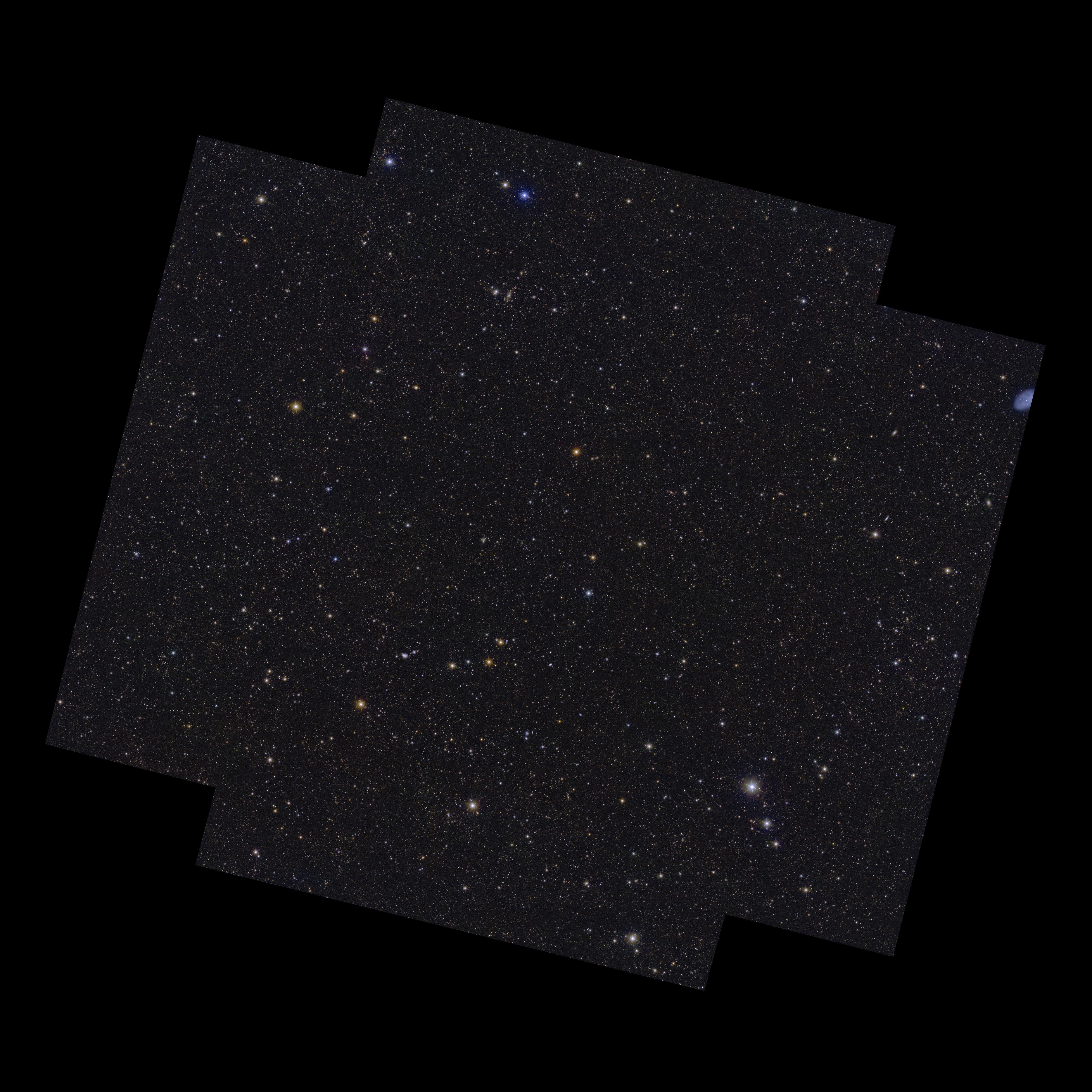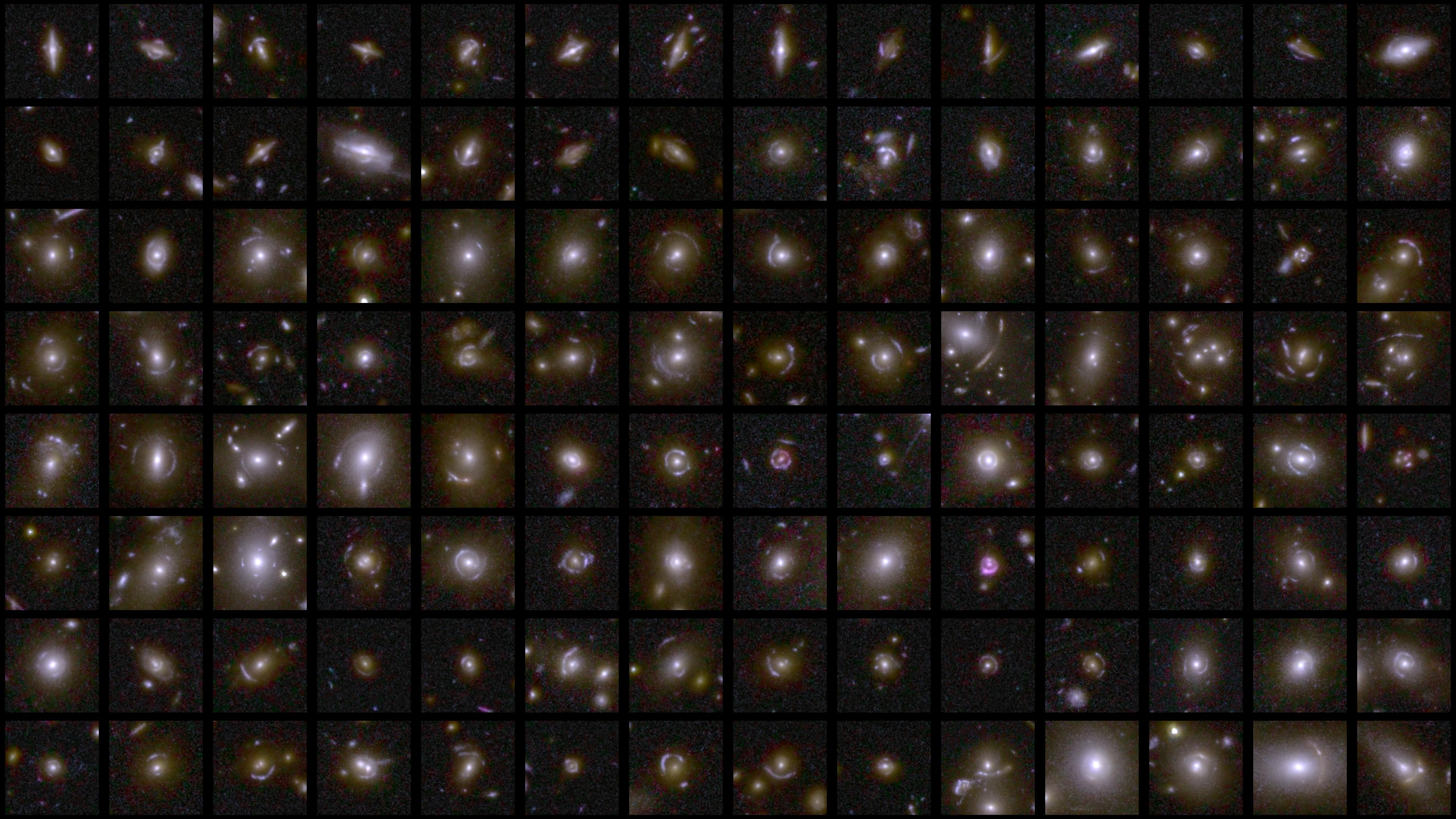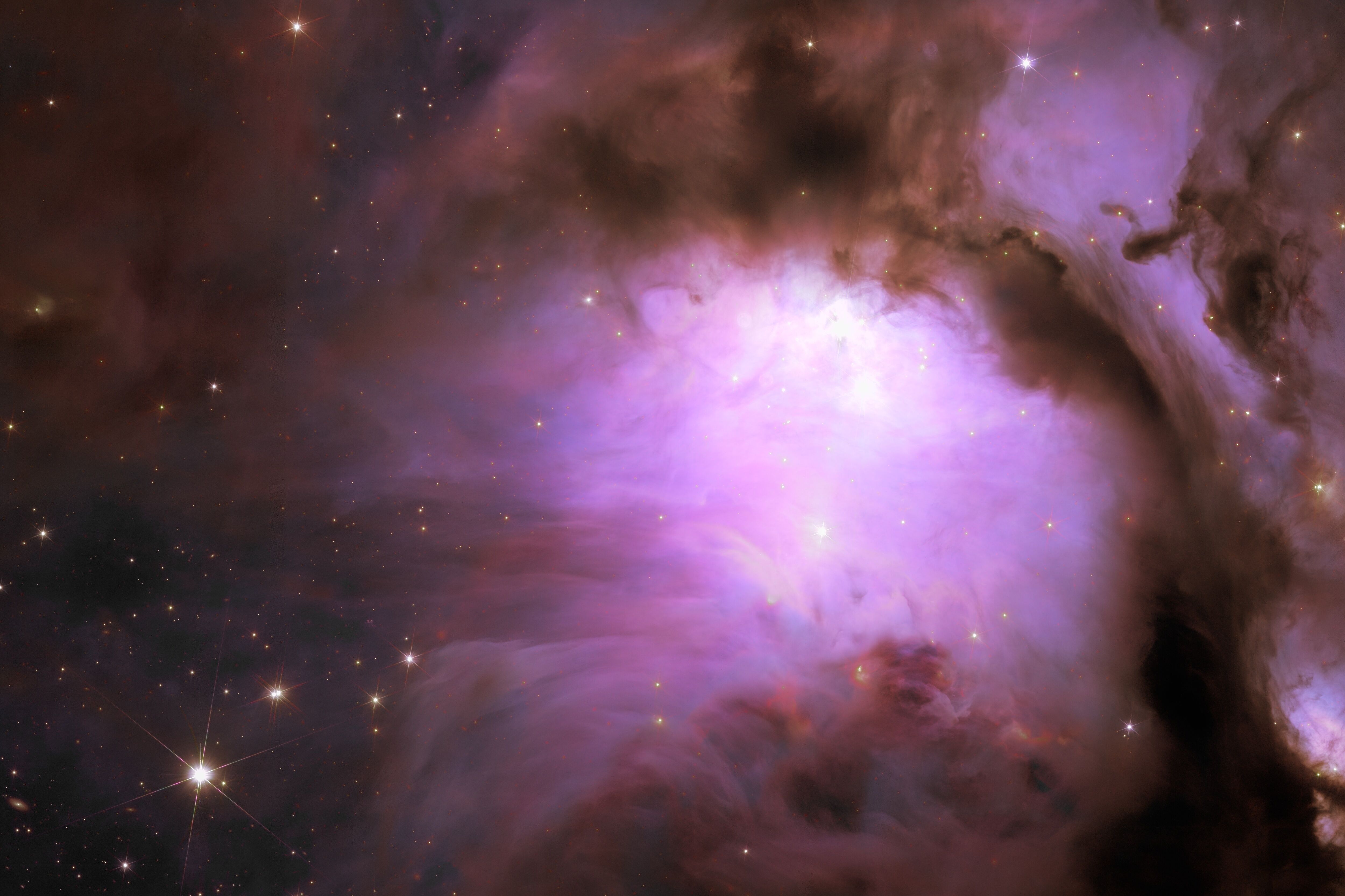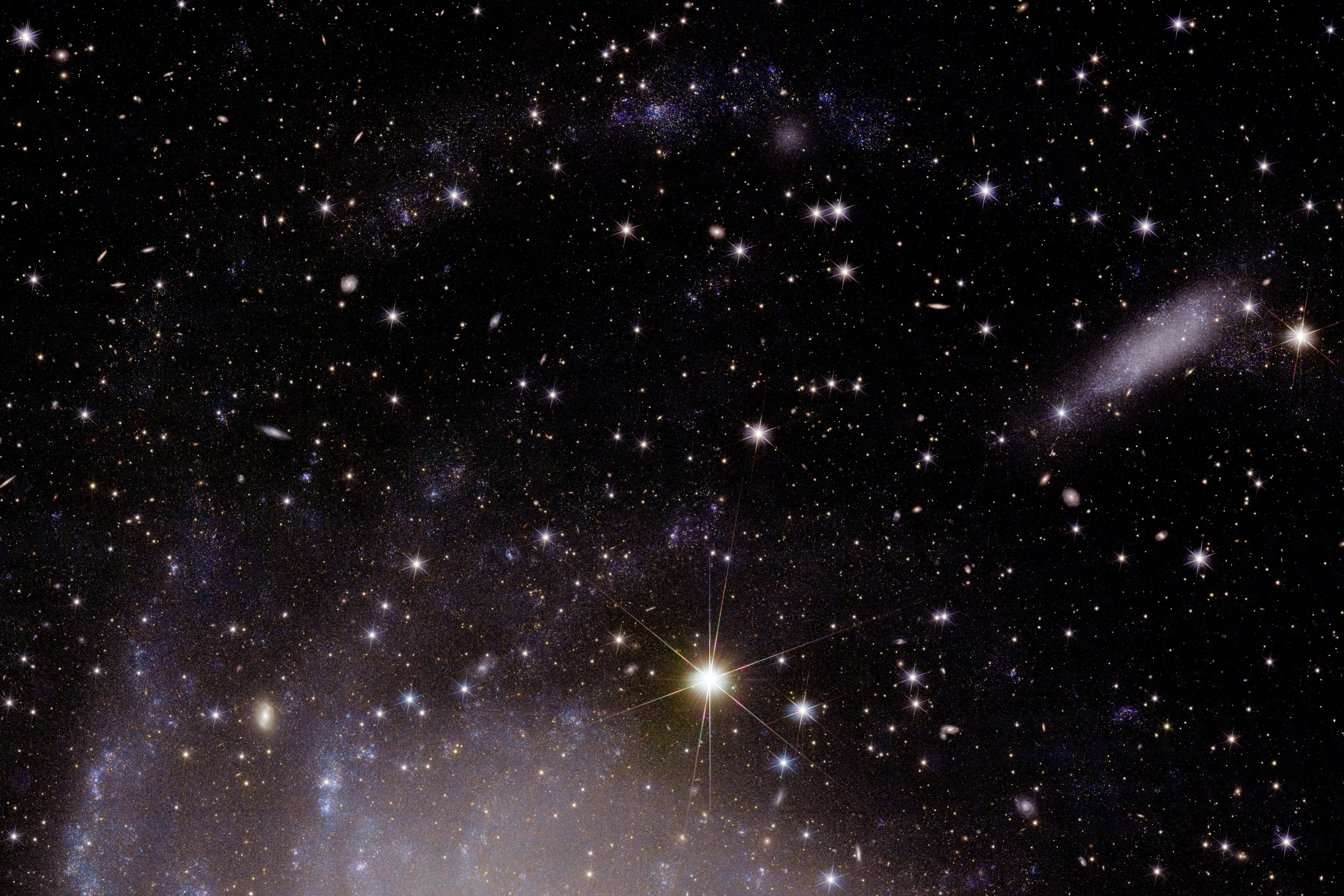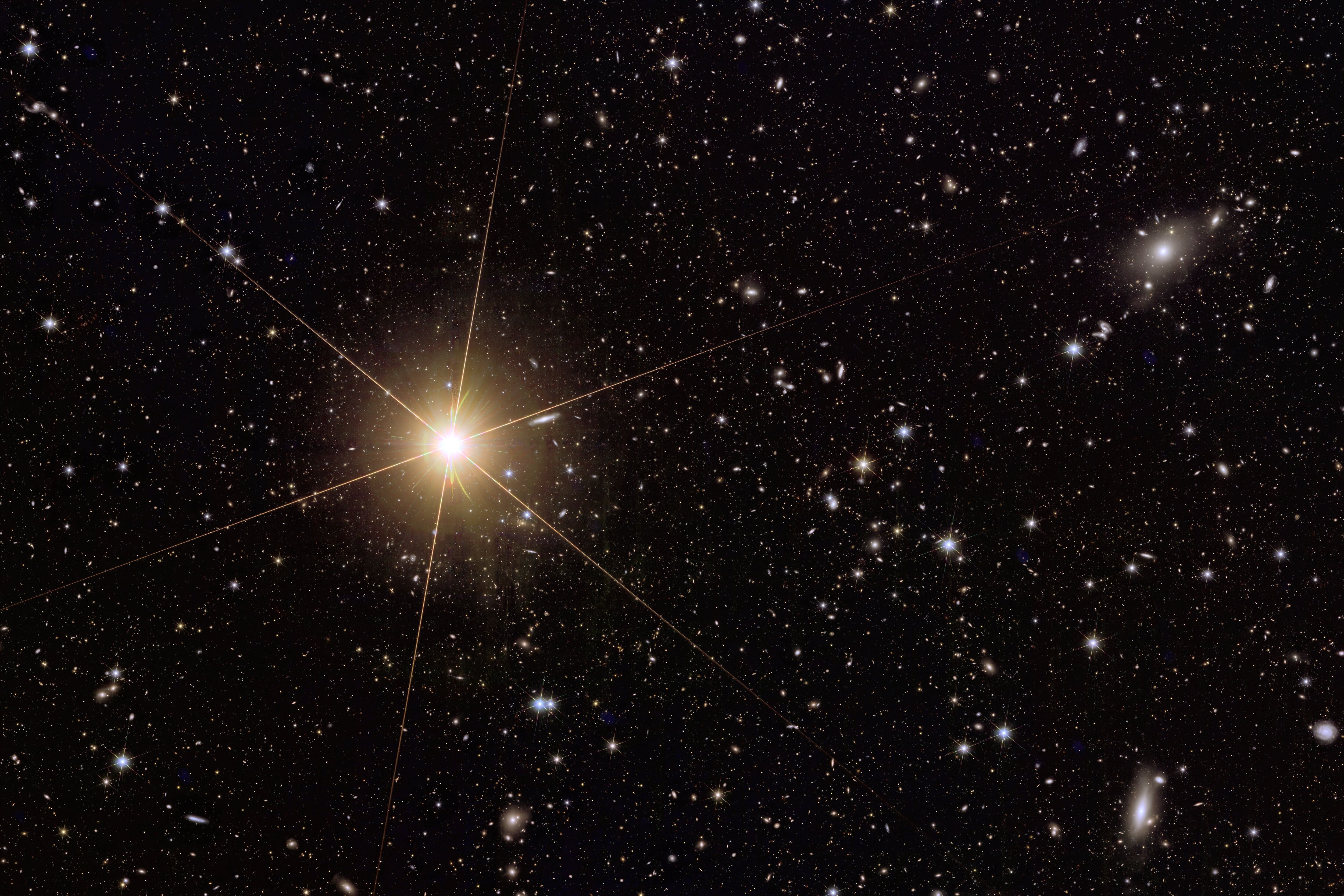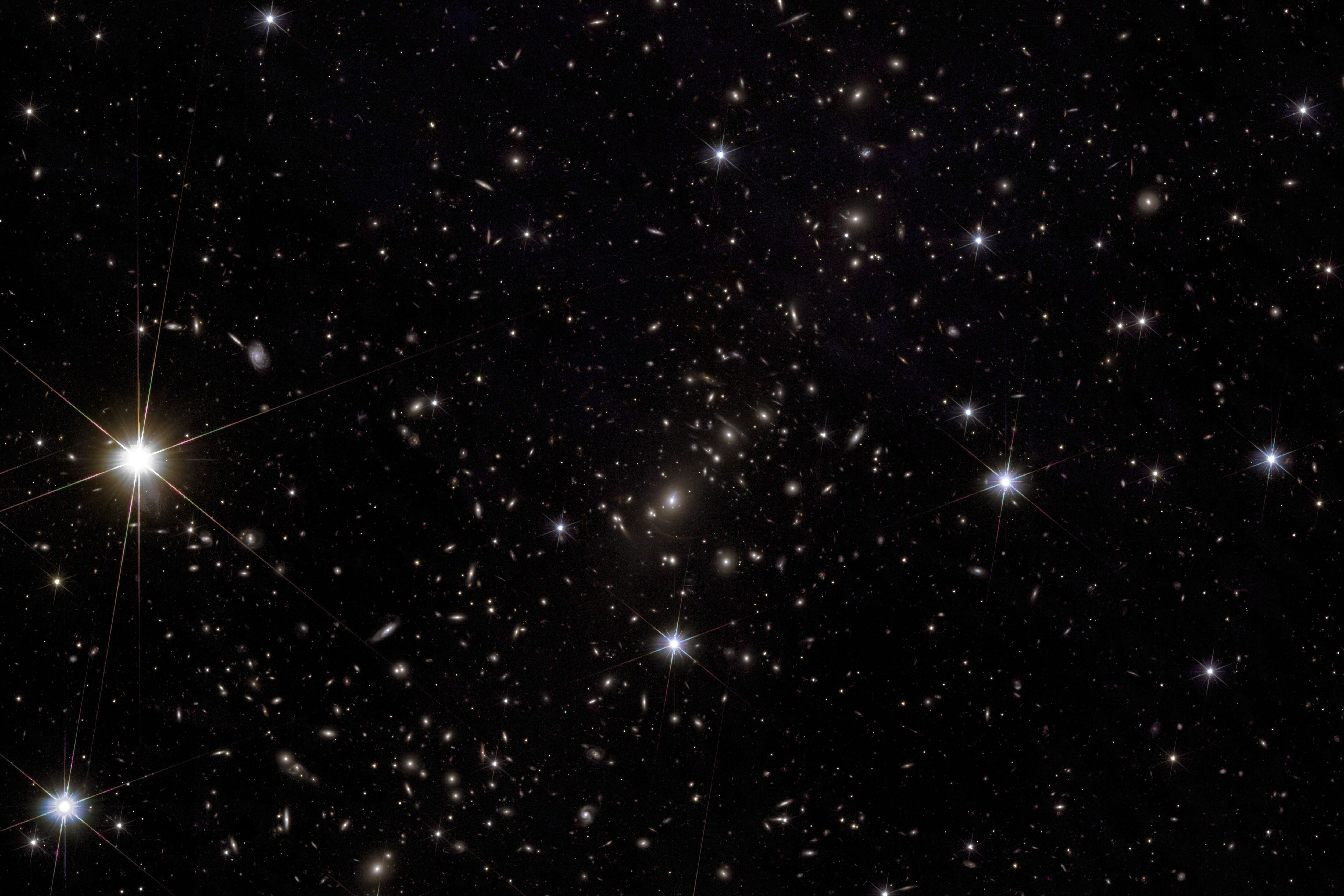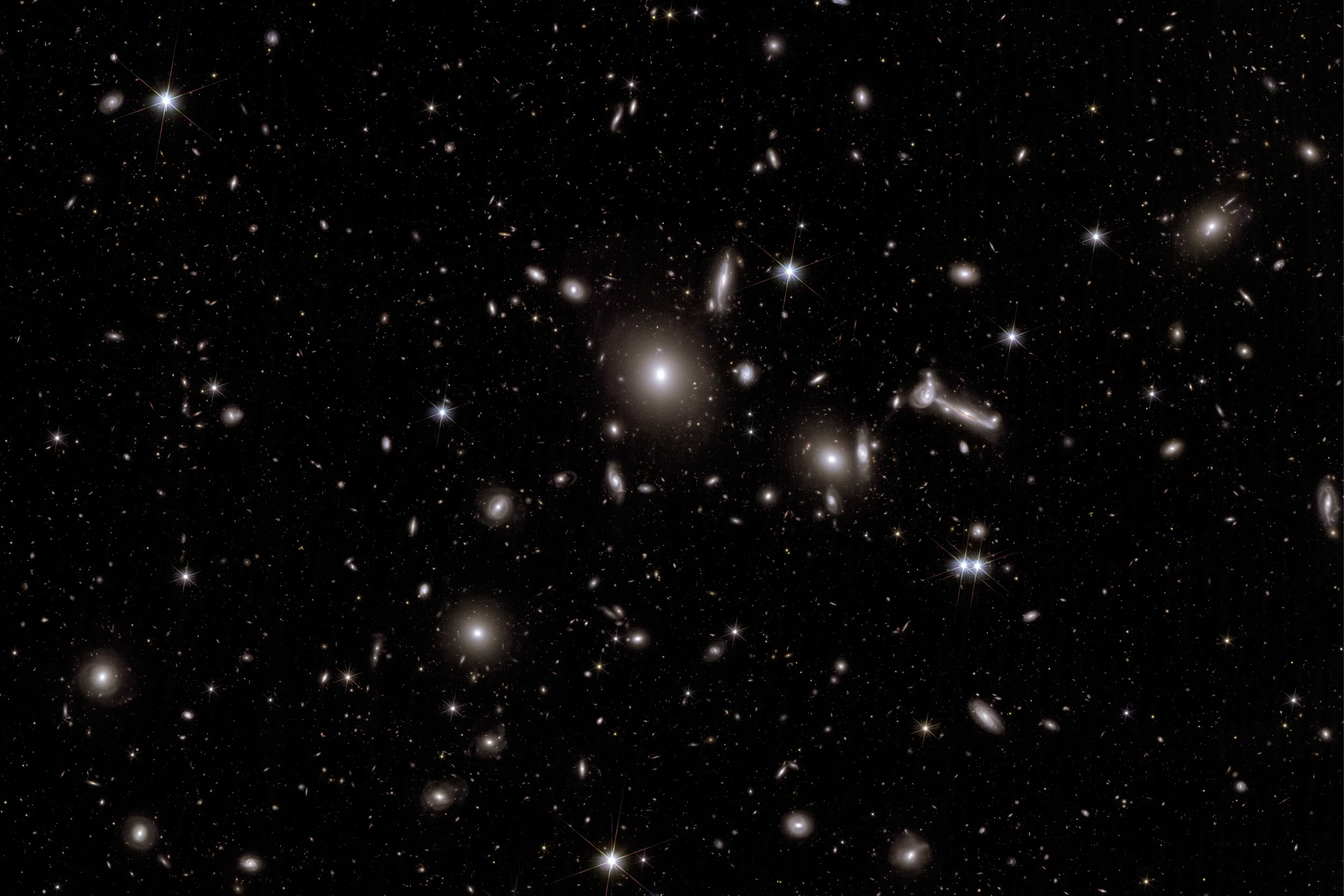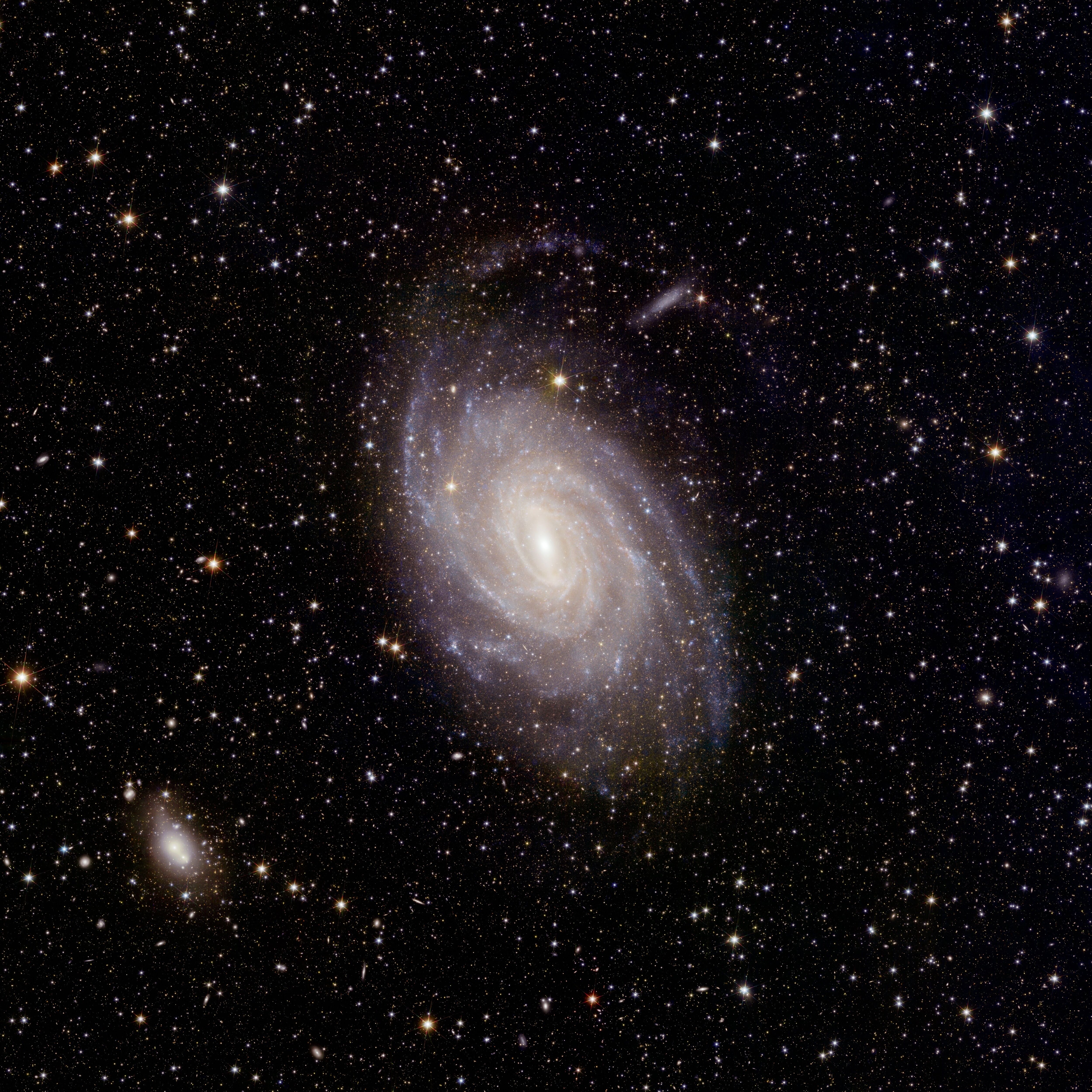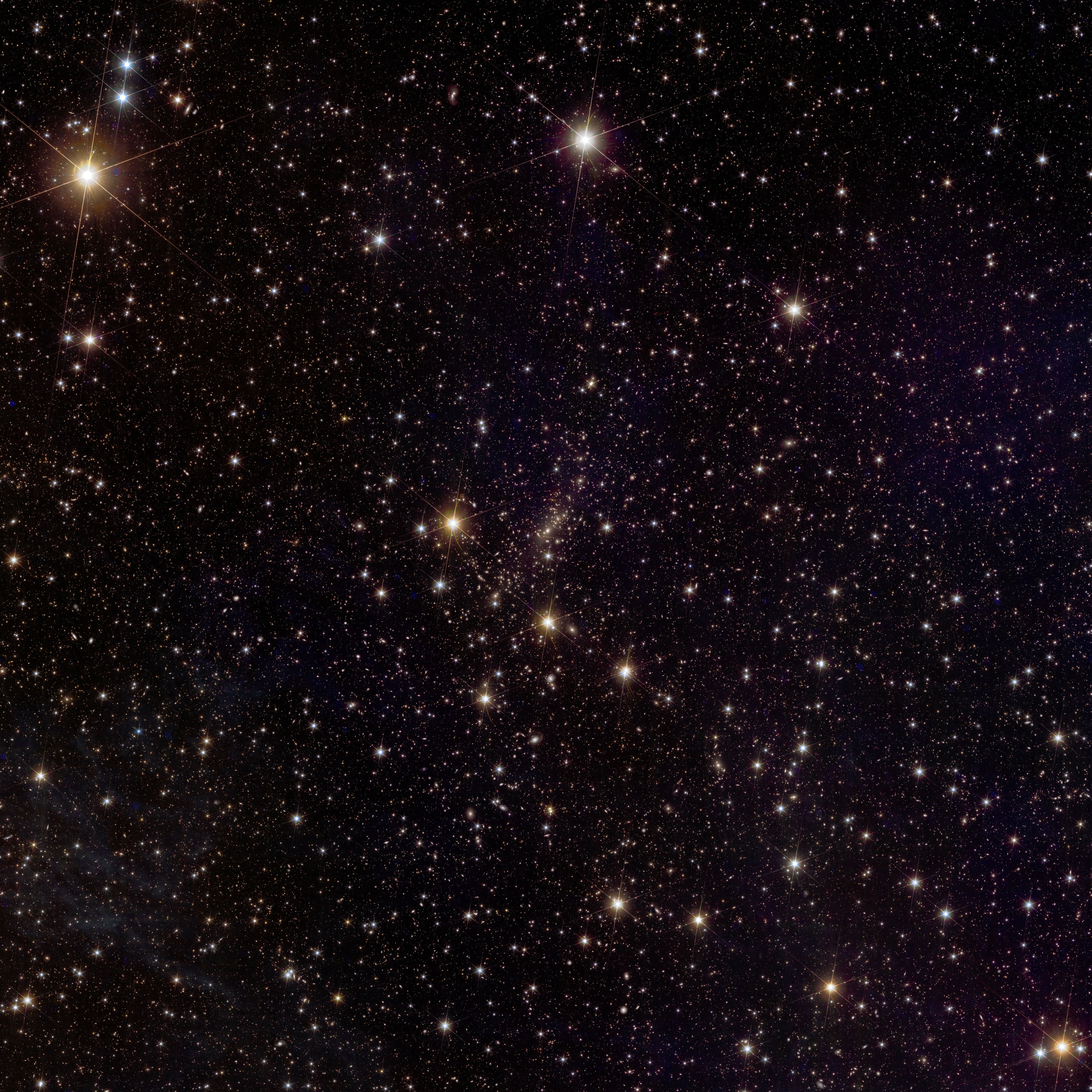
Euclid
Euclid’s view of irregular galaxy NGC 6822 - Zoom 1
Please sign in to download.
To create a 3D map of the Universe, Euclid will observe the light from galaxies out to 10 billion light-years. Most galaxies in the early Universe don’t look like a neat spiral but are irregular and small. They are the building blocks for bigger galaxies like our own. This first irregular dwarf galaxy that Euclid observed is called NGC 6822 and is located close by, just 1.6 million light-years from Earth. It is a member of the same galaxy cluster as the Milky Way (called the Local Group), and was discovered in 1884. In 1925 Edwin Hubble was the first to identify NGC 6822 as a ‘remote stellar system’ well beyond the Milky Way. NGC 6822 has been observed many times since, most recently by the NASA/ESA/CSA James Webb Space Telescope. But Euclid is the first to capture the entire galaxy and its surroundings in high resolution in about one hour, which would not be possible with telescopes on the ground (the atmosphere prevents this sharpness) or with Webb (which makes very detailed images of small parts of the sky). One interesting aspect of this galaxy is that its stars contain low amounts of elements that are not hydrogen and helium. These heavier, ‘metal’ elements are produced by stars over their lifetimes and are therefore not very common in the early Universe (before the first generation of stars had been born, lived and died). “By studying low-metallicity galaxies like NGC 6822 in our own galactic neighbourhood, we can learn how galaxies evolved in the early Universe,” explains Euclid Consortium scientist Leslie Hunt of the National Institute for Astrophysics in Italy, on behalf of a broader team working on showcasing galaxies imaged by Euclid. In addition to studying the star-formation history of this galaxy, which can now be done thanks to the colour information from Euclid’s near-infrared instrument and its wide field of view, scientists have already spotted many globular star clusters in this image that reveal clues as to how the galaxy was assembled. Globular clusters are collections of hundreds of thousands of stars held together by gravity. They are some of the oldest objects in the Universe, and most of their stars were all formed out of the same cloud. That’s why they hold the ‘fossil records’ of the first star-formation episodes of their host galaxies. See also Euclid’s first image of globular cluster NGC 6397. [TECHNICAL DETAILS OF IMAGE] The data in this image were taken in about one hour of observation. This colour image was obtained by combining VIS data and NISP photometry in Y and H bands; its size is 8800 x 8800 pixels. VIS and NISP enable observing astronomical sources in four different wavelength ranges. Aesthetics choices led to the selection of three out of these four bands to be cast onto the traditional Red-Green-Blue colour channels used to represent images on our digital screens (RGB). The blue, green, red channels capture the Universe seen by Euclid around the wavelength 0.7, 1.1, and 1.7 micron respectively. This gives Euclid a distinctive colour palette: hot stars have a white-blue hue, excited hydrogen gas appears in the blue channel, and regions rich in dust and molecular gas have a clear red hue. Distant redshifted background galaxies appear very red. In the image, the stars have six prominent spikes due to how light interacts with the optical system of the telescope in the process of diffraction. Another signature of Euclid special optics is the presence of a few, very faint and small round regions of a fuzzy blue colour. These are normal artefacts of complex optical systems, so-called ‘optical ghost’; easily identifiable during data analysis, they do not cause any problem for the science goals. The cutout from the full view of NGC 6822 is at the high resolution of the VIS instrument. This is nine times better than the definition of NISP that was selected for the full view; this was done for the practical reason of limiting the format of the full image to a manageable size for downloading. The cutout fully showcases the power of Euclid in obtaining extremely sharp images over a large region of the sky in one single pointing. Although this image represents only a small part of the entire colour view, the same quality as shown here is available over the full field. The full view of NGC 6822 at the highest definition can be explored on ESASky. [Image description] This square astronomical image is speckled with numerous stars visible across the black expanse of space. Most stars are visible only as pinpoints. More stars are crowding the centre of the image, visible as an irregular round shape. This is an irregular galaxy. The centre of the galaxy appears whiter and the edges yellower. Several pink bubbles are visible spread throughout the galaxy. The stars across the entire image range in colour from blue to white to yellow/red, across a black background of space. Blue stars are younger and red stars are older. A few of the stars are a bit larger than the rest, with six diffraction spikes. IMAGE CREDIT: ESA/Euclid/Euclid Consortium/NASA, image processing by J.-C. Cuillandre (CEA Paris-Saclay), G. Anselmi; CC BY-SA 3.0 IGO
